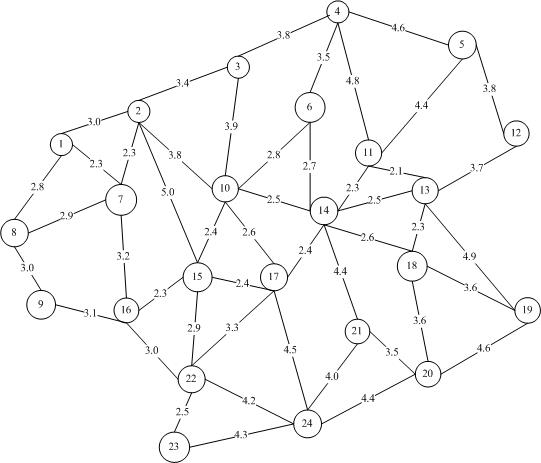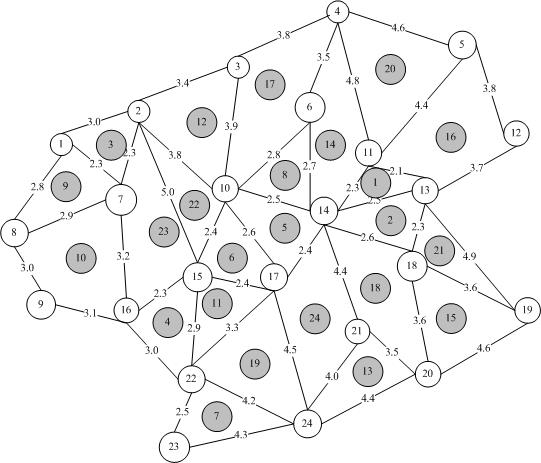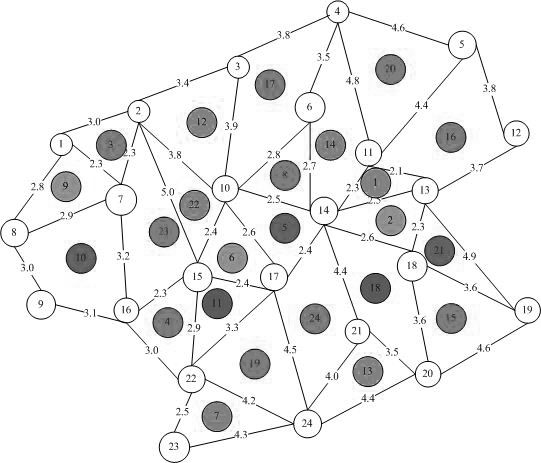Interference reduction method based on overlapping clustering in udn
A reduction and clustering technology, applied in the field of communication, can solve problems such as use and irregular distribution of small base stations
- Summary
- Abstract
- Description
- Claims
- Application Information
AI Technical Summary
Problems solved by technology
Method used
Image
Examples
Embodiment Construction
[0038] An embodiment of the present invention is given below to further describe the present invention in detail. Consider an ultra-dense network consisting of several small cells and multiple users, both of which are randomly distributed within the network. Each base station is connected to the central controller through a backhaul link.
[0039] The central controller first constructs the path loss diagram corresponding to the small base stations in the network, such as figure 1 As shown, the nodes in the figure correspond to the small base stations, and the edges correspond to the path loss between the small base stations. If the path loss between the small base stations is less than the preset loss threshold, there is a condition between the nodes corresponding to the two small base stations. and the length of the edge is equal to the path loss between the two small base stations. If the path loss between the small base stations is greater than a preset loss threshold, th...
PUM
 Login to View More
Login to View More Abstract
Description
Claims
Application Information
 Login to View More
Login to View More - R&D
- Intellectual Property
- Life Sciences
- Materials
- Tech Scout
- Unparalleled Data Quality
- Higher Quality Content
- 60% Fewer Hallucinations
Browse by: Latest US Patents, China's latest patents, Technical Efficacy Thesaurus, Application Domain, Technology Topic, Popular Technical Reports.
© 2025 PatSnap. All rights reserved.Legal|Privacy policy|Modern Slavery Act Transparency Statement|Sitemap|About US| Contact US: help@patsnap.com



